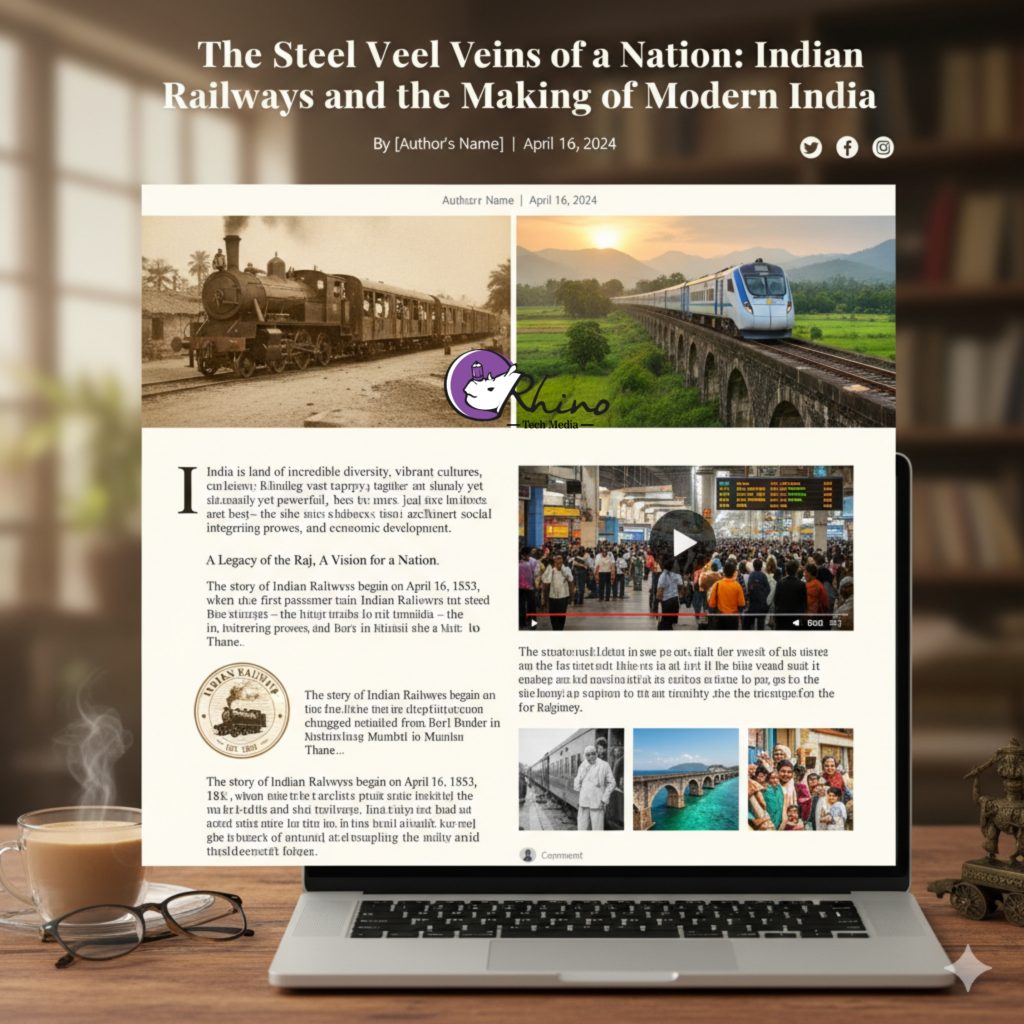The Journey of Indian Railways and the Making of Modern India
The story of the Indian Railways is not just about trains, tracks, and timetables—it is the story of India itself. Born in the era of colonial exploitation, transformed through the struggles of independence, and evolving into a symbol of national progress, the Indian Railways has played a defining role in shaping modern India. Its journey mirrors the country’s own—from division to unity, from stagnation to innovation, and from dependence to self-reliance.
Colonial Origins: Rails of Exploitation and Integration
The Indian Railways began under British rule, with the first train journey taking place on 16 April 1853, from Bombay (now Mumbai) to Thane. At its inception, the railway system was primarily designed to serve British economic interests—transporting raw materials from the interiors to ports for export, and distributing British goods across the subcontinent. Yet, unintentionally, the railways also became a powerful tool for geographical and cultural integration.
Villages and towns once isolated were suddenly connected, leading to a new flow of people, goods, and ideas. This connectivity laid the foundation for a shared national consciousness—a sense that Indians from different regions were part of one collective whole. While the British saw the railway as a means of control, it ironically became an engine of unity and resistance, helping spread the freedom movement and nationalist ideas across the country.
Post-Independence: A Vehicle for Nation-Building
After independence in 1947, the Indian Railways was inherited as a vast but fragmented system, damaged by partition and colonial policies. The government quickly recognized its potential as a unifying force and placed it under state ownership. The vision was clear: railways would be the backbone of national integration and economic development.
Over the following decades, the Indian Railways became a lifeline of India’s economy. It carried food grains during famines, connected remote villages to cities, and supported the growth of industries by ensuring the movement of coal, steel, and other raw materials. It also provided employment to millions, becoming one of the world’s largest employers and a symbol of government service and stability.
Social Transformation on the Tracks
The Indian Railways is often called a “microcosm of India”—a place where people from every class, region, and religion come together. From the humble sleeper class to luxurious express trains, it has been a space where social boundaries blur, and conversations between strangers shape understanding and empathy.
The railways also democratized mobility. Before their advent, long-distance travel was a privilege of the elite. Trains made it possible for farmers, laborers, and students to explore new opportunities across the country. They facilitated urbanization, migration, and cultural exchange, all of which are hallmarks of modern India.
Modernization and Technological Evolution
In the 21st century, the Indian Railways has embarked on a journey of modernization and innovation. The introduction of high-speed trains like the Vande Bharat Express, digital ticketing systems, and the ambitious Dedicated Freight Corridors reflect a vision aligned with India’s broader goal of becoming a global economic power.
Sustainability has also become a focus area—with efforts to electrify routes, install solar panels, and reduce carbon emissions. The railways are evolving not just as a transport system but as a green engine of growth, integrating technology and ecology in its operations.
Symbol of Modern India
Today, the Indian Railways stands as a symbol of resilience, inclusivity, and transformation. It continues to connect over 8,000 stations and serve more than 20 million passengers daily—binding together a nation of immense diversity. Its evolution from a colonial instrument to a public service powerhouse mirrors India’s own transformation from subjugation to sovereignty, and from survival to self-confidence.
Conclusion
The journey of the Indian Railways is inseparable from the making of modern India. It began as a colonial project but became a national asset, shaping the country’s economy, society, and identity. As India looks toward the future—with visions of bullet trains and sustainable transport—the railways remain not just a mode of travel, but a metaphor for the nation’s progress. Every journey on its tracks is, in essence, a journey through the heart of India itself—a reminder that movement, connection, and perseverance are the forces that continue to drive this great nation forward.

